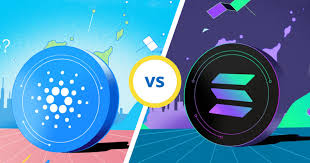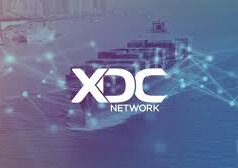In the fast-evolving world of blockchain, Cardano and Solana stand out as two distinct champions, each catering to different developer mindsets. Whether you’re all about precision and academic rigor or speed and experimentation, one of these platforms may resonate with your vision.
1. Philosophical Foundations: Research-First vs Speed-First
Cardano: Built on Academic Rigor
Cardano is meticulously engineered through rigorous peer-reviewed research. Its PoS consensus protocol, Ouroboros, is built for security, decentralization, and long-term stability. This research-led roadmap appeals to developers who value predictability, formal methods, and academic validation.(TokenTax, Wikipedia)
Solana: The Express Lane for Builders
In contrast, Solana pushes the envelope with Proof-of-History (PoH) combined with PoS. This enables remarkable transaction throughput and minimal latency—ideal for projects in DeFi, NFTs, and high-frequency applications.(TokenTax, BlockTech Dev Co)
2. Performance: Speed, Cost, and Efficiency
Let’s break down how Cardano and Solana stack up in terms of core performance:
| Feature | Cardano | Solana |
|---|---|---|
| TPS (Throughput) | ~250 TPS | Up to 65,000 TPS (BlockTech Dev Co, LiteFinance) |
| Transaction Fees | Around $0.10–$0.20 | Fractions of a cent (OKX, LiteFinance) |
| Complexity | Multi-layered, slower rollout | Highly performant, faster innovation (TokenTax, CoinLedger) |
Solana is exceptionally cost- and speed-efficient, while Cardano’s slower, layered design favors resilience.
3. Ecosystem & Developer Activity
Solana: Rapid Growth, Rich Ecosystem
Solana’s ecosystem is flourishing with 100+ DeFi protocols and a TVL (Total Value Locked) of about $328 million, more than double Cardano’s ~$161 million.(ADAPULSE) The development activity reflects this vibrancy: Solana recorded around 464,000 development events in the past year, compared to Cardano’s 389,900.(Nasdaq)
Cardano: Methodical but Maturing
Cardano’s ecosystem may be smaller, but it’s built on deliberate foundations. Its slower—but steady—development process has led to notable upgrades like Ouroboros Leios, Hydra, Mithril, and nested transactions, all targeting scalability and developer usability. In fact, $70M+ in ADA has been approved via an on-chain community vote to fund these core developments.(Crypto Basic, The Currency analytics)
4. Developer Experience and Security
Cardano: Intentional, Secure Path
Cardano’s approach focuses on precision: think formal verification, structured eras (Byron → Shelley → Goguen → Basho → Voltaire), and sidechains like Midnight for modular expansion.(Wikipedia, The Currency analytics) This appeals to developers aiming for long-term stability and robust governance.
Solana: Fast and Fun—With Caveats
Solana is developer-friendly when it comes to low barriers to experimentation. Its speed-friendly tooling and mobile ecosystems (like Solana Saga) are enticing.(Wikipedia) But studies reveal that security challenges exist—e.g., one review found 83% of developers failed to catch critical vulnerabilities, though overall real-world vulnerability rates remain under 0.3%. Frameworks like Anchor help mitigate risk.(arXiv)
5. Decentralization & Governance
Cardano: Community-Driven Upgrades
Cardano’s governance model is maturing in real time. The August 2025 on-chain treasury vote exemplifies decentralized funding for features like Hydra, nested transactions, and consensus improvements—all orchestrated by the community.(Crypto Basic, The Currency analytics)
Solana: Scalability at a Centralization Cost
Solana’s high performance comes partly from its more centralized validator structure. While this serves efficiency, it raises concerns about decentralization and long-term resilience.(OKX)
6. Choosing the Right Fit: Developer Profiles
Go with Solana if you are:
- Building NFT, DeFi, or performance-critical applications
- Prioritizing ultra-low fees and fast onboarding
- Comfortable with occasional outages in exchange for agility
Opt for Cardano if you are:
- Seeking rigorous security, governance, and formalism
- Committed to long-term, scalable systems (e.g., finance, identity)
- Drawn to a research-backed ecosystem with community-driven upgrades
7. Final Thoughts: Diverging Paths, Shared Vision
Both Cardano and Solana represent third-generation blockchains aiming to improve upon past limitations. Yet their development philosophies diverge sharply. Solana is about getting things built quickly; Cardano is about building things built to last.
The better choice depends entirely on your developer values. If you crave speed, low costs, and a dynamic ecosystem—Solana might be your go-to. If you prefer academic rigor, composable governance, and measured innovation—Cardano will likely suit you best.
Whichever path you choose, you’re contributing to the expanding frontier of decentralized tech.
Sources
- Research-based architecture & ecosystem contrasts:(TokenTax, ADAPULSE, Cryptomus, CoinLedger)
- Performance comparisons: TPS, fees:(BlockTech Dev Co, LiteFinance, OKX, Cryptomus)
- Developer activity stats:(Nasdaq)
- Cardano’s treasury vote and upgrades:(Crypto Basic, The Currency analytics)
- Solana ecosystem and mobile tools:(Wikipedia)
- Solana security study & Anchor framework:(arXiv)
Feel free to tweak the tone or structure as needed—or let me know if you’d like to add personal anecdotes, deeper technical comparisons (e.g. Plutus vs Rust/Anchor), or a developer testimonial!



























